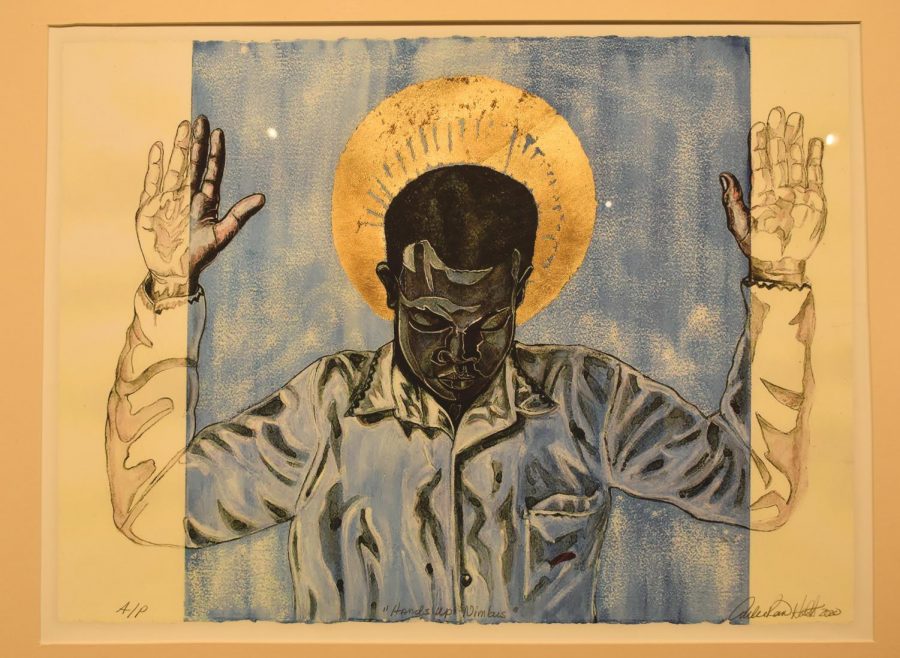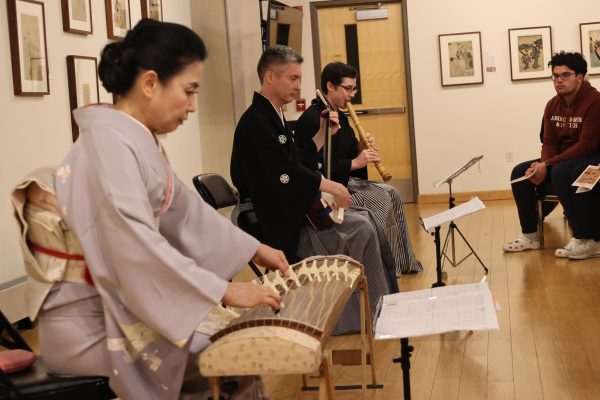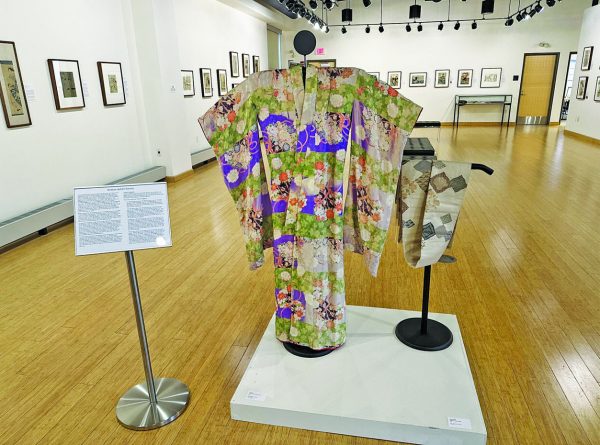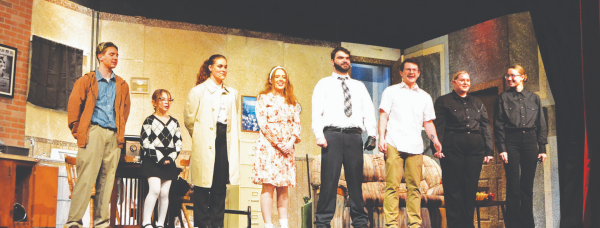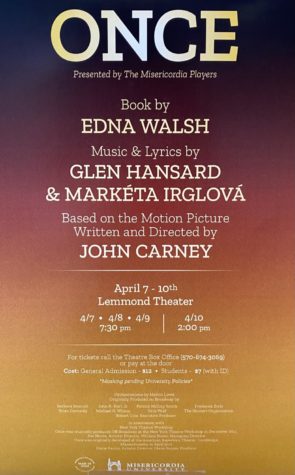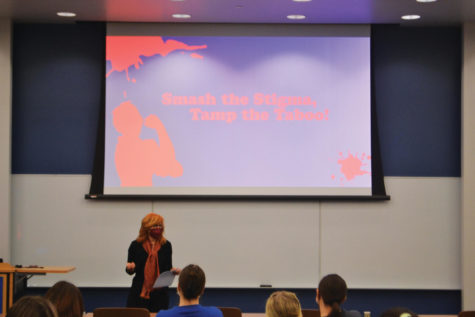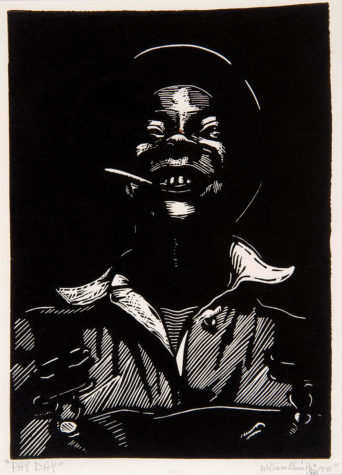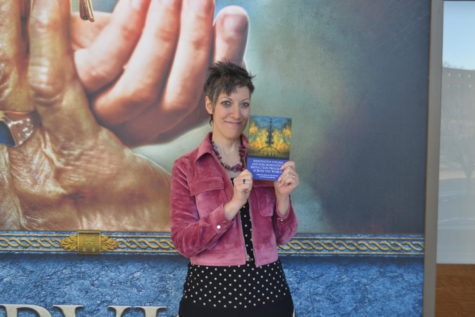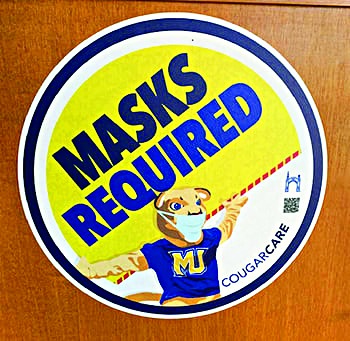Art Gallery Purchases Art from “Fine Print” Exhibit
A piece titled “Hands Up-Nimbus” by Curlee Raven Holton, who helped curate “The Fine Print” exhibit, hangs in the Pauly Friedman Art Gallery. Holton created it to bring awareness to bring more awareness to the discrimination faced by Black people.
May 5, 2021
The Pauly Friedman Art Gallery recently acquired two new pieces to add to its permanent collection.
“Hands Up Nimbus” by Curlee Raven Holton and “Pond” by Michelle Talibah, both of which came from the “The Fine Print” exhibit held in March, were purchased by the art gallery with money from the Naffei Endowment, an endowment used annually to fund both collection and exhibition pieces.
Lalaine Little, Director, said she has focused more on exhibitions than growing the “small but densely packed” art collection,which was done more heavily before she took over the role in 2018. After the impact and success of “The Fine Print,” she decided it was the perfect time to expand the gallery’s collection.
“We saw this as opportunity to add to our collection, particularly in light of Black Lives Matter,” Little said. “It’s important for us as an academic art gallery to talk to students about our current political moment, and in our current political moment, the African American community in particular are in great distress and we need to show our support.”
Little decided to use a survey to allow supporters of the art gallery and the exhibit, which featured contemporary print pieces made by African American artists, choose which works the gallery would purchase. Holton’s piece won the majority vote, and (name here) came in second place.
Jenn Klobe, senior occupational therapy major and student assistant for the art gallery, said she was excited to hear about the purchase of the pieces. She said “The Fine Print” exhibit was a great way for the school to acknowledge current events.
“Last summer, we saw a rise in awareness for the Black Lives Matter movement, so coming back to campus in the fall semester to an exhibit that highlighted Black artists was a great way to see that our school is taking this matter seriously,” Klobe said.
She believes art is powerful tool that can be used to engage the campus community in meaningful conversations.
“Many of our exhibits have promoted awareness for various topics including mental health and social justice,” she said. “I think that this has been a great way to get the Misericordia community to start thinking about these topics and spark important conversations.”
Little said while there are no concrete plans on where the purchased pieces will be displayed, she is exploring several different options, including using them as décor around campus and loaning them to community groups to help expose them to the different creation methods and educational tools.
“We try to show works that are historically relevant. Something that both artists in the area as well as our students can look on and find an innovative technique or an innovative way of expressing a relevant subject, so for these artists to be available to community groups I think that’s important,” Little said.
She believes it’s valuable to have thoughtful and relevant exhibits because they send a message of support to those who need it.
“It’s important for us as a university and as an art institution because we want our students, faculty and staff of color have some means of expressing both our pride in our communities as well as our shared concern that there are people in our community that don’t feel safe, that don’t feel seen,” she said.
Klobe hopes to see more students show interest in the art gallery and the stories each exhibit tries to tell.
“I believe there is always room for more exposure,” she said. “I have talked to many students who were not even aware that we have an art gallery on campus, which I think is very unfortunate. I would like to see the gallery receive more attention from students, as it has a lot to offer.”
She also hopes to see the university take more action to show more support for minority groups.
“I have seen so many students sharing information on anti-racism, and seeing the start of our school’s Black Student Union has been amazing. I hope that the university can follow in the students’ footsteps and encourage anti-racism through its actions,” she said.
Little’s hopes for the gallery include finding more art that speaks to current issues as well as continuing to help create more well-rounded students.
“An active art gallery is always, I think, a testament of a university’s commitment to creating a really diverse and intellectually well-rounded graduate student,” she said.
She said she wants the art gallery to be a space where all students can feel safe and welcome.
“The college experience should be a second home. It should be where you build family, and I want everyone to have that experience, so I hope we can help in some small way with that,” Little said.

